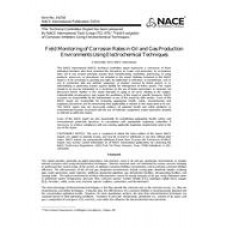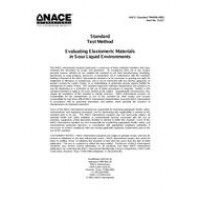NACE 31014
- Field Monitoring of Corrosion Rates in Oil and Gas Production Environments Using Electrochemical Techniques
- Report / Survey by National Association of Corrosion Engineers,
- Category: NACE
$33.00
$17.00
This report provides guidance for using electrochemical techniques to evaluate the performance of corrosion inhibitors in oil and gas production environments. It summarizes the specific areas where these techniques excel as well as those areas where their use is limited in the field. The data from the electrochemical monitoring techniques is used to identify corrosion mechanisms and/or trends that will aid in selecting effective inhibitors and optimizing their concentrations (or application frequency) within a system.
 PDF
PDF
All of our standards document are available in PDF (Portable Document Format), an electronic, downloadable format.You will be able to download the file in your account downloads.
 Multi-User Access
Multi-User Access
After purchasing, you have the ability to assign each license to a specific user.
 Printable
Printable
At any time, you are permitted to make printed copies for your and your members' reference use.



